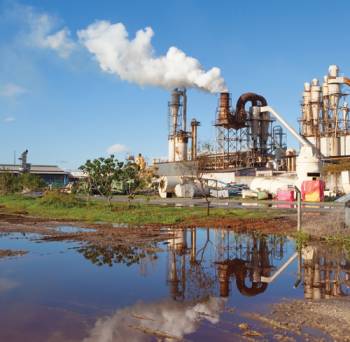Leukaemia
Leukaemia is cancer of the bone marrow. The bone marrow produces white blood cells, red blood cells and platelets normally. Leukaemia occurs when this normally orderly process of production is disrupted. This leads to the production of immature marrow cells called leukemic blasts. These leukemic blasts will crowd out normal marrow cells leading to reduction of normal blood cells.
What Causes Leukaemia?
 While there are definite known risk factors that can cause leukaemia, it is often difficult to pinpoint an exact cause for the majority of patients with leukaemia. The known risk factors are radiation exposure (example Marie Curie, the scientist who discovered radiation, died of leukaemia), certain chemical (such as Benzene), certain genetic disorders (e.g. Down’s Syndrome) and some viruses. Leukaemia can also develop in patients who had received certain types of chemotherapeutic agents.
While there are definite known risk factors that can cause leukaemia, it is often difficult to pinpoint an exact cause for the majority of patients with leukaemia. The known risk factors are radiation exposure (example Marie Curie, the scientist who discovered radiation, died of leukaemia), certain chemical (such as Benzene), certain genetic disorders (e.g. Down’s Syndrome) and some viruses. Leukaemia can also develop in patients who had received certain types of chemotherapeutic agents.
Signs and Symptoms
The symptoms of leukaemia are often related to the disruption of normal bone marrow functions. The resultant anaemia (lack of red cells) will lead to breathlessness, giddy spells, headaches and lethargy. However, such symptoms can also be due to anaemia from other causes.
Swollen lymph glands, abdominal distension from enlarged spleen, frequent infections, recurrent fevers and night sweats are often related to the high abnormal white cell counts. Sometimes, this also results in severe bone pains.
Bleeding problems like bleeding gums, frequent nose bleeds, bruises (blue-black patches) and red spots called petechial haemorrhages (bleeding beneath the skin) are related to a low platelet count.
Sometimes general symptoms like malaise, loss of appetite and weight loss may be the only symptoms.
Diagnosis and Assessment

How is Diagnosis made?
As many of the above mentioned symptoms can be due to other medical conditions, the diagnosis must be confirmed with a blood test and a bone marrow examination. The necessary blood test is called a Full Blood Count (FBC) or also called Complete Blood Count (CBC). This will typical show high white cell count and is usually comprised of immature white cells called blasts. The red cell count will be low, known as anaemia while the platelet count is also typically low (known as thrombocytopenia).
However, the diagnostic test is that of a bone marrow examination. This can be just an aspirate and biopsy but typically, these days, marrow samples are also sent for more specialised tests like flow cytometry, cytogenetic analysis and specialised molecular markers. The aspirate and biopsy typically confirms the diagnosis of leukaemia while these specialised tests give us additional information on the exact subtype of leukaemia as well as prognostic indications.
The bone marrow examination is typically preformed at the pelvic bone in the back (called Posterior Superior Iliac Crest). For Acute Lymphoid Leukaemia, a lumbar puncture is also necessary. This procedure obtains fluid from the brain (called cerebro-spinal fluid, CSF) to determine if there is leukaemia infiltration, which is common with Acute Lymphoid Leukaemia.
Staging
For leukaemia, staging does not apply except for Chronic Lymphocytic Leukaemia. The subtype of leukaemia is more important as this determines the aggressiveness and hence its treatment and prognosis.
Treatment and Care
Treatment of leukaemia is dependent on the exact type/subtype of leukaemia. The various treatment modalities comprised of chemotherapy, biological therapy, immunomodulator, stem cell transplant and radiotherapy.
Chemotherapy Chemotherapy had been the mainstay of treatment since the 1960s. This discovery had made leukaemia, one of the first cancer to be potentially curable and spawned many new chemotherapy programs for other cancers. But, unfortunately, as wonderful as chemotherapy was, many patients are still not cured. Hence, the development of Stem Cell Transplant. When it first started, it was known as Bone Marrow Transplant, mainly because the source of Stem Cell, was from the bone marrow. Now, other sources of stem cell include cord blood and peripheral blood called Cord Blood Transplant and Peripheral Blood Stem Cell Transplant. Collectively, all these are now called Stem Cell Transplant. The principle is quite simple. Basically, it is to use normal stem cells from a donor to “replace” the abnormal leukaemia cells. This is usually preceded by large doses of chemotherapy alone/or together with radiotherapy to eradicate the leukaemia cells first.
Chemotherapy had been the mainstay of treatment since the 1960s. This discovery had made leukaemia, one of the first cancer to be potentially curable and spawned many new chemotherapy programs for other cancers. But, unfortunately, as wonderful as chemotherapy was, many patients are still not cured. Hence, the development of Stem Cell Transplant. When it first started, it was known as Bone Marrow Transplant, mainly because the source of Stem Cell, was from the bone marrow. Now, other sources of stem cell include cord blood and peripheral blood called Cord Blood Transplant and Peripheral Blood Stem Cell Transplant. Collectively, all these are now called Stem Cell Transplant. The principle is quite simple. Basically, it is to use normal stem cells from a donor to “replace” the abnormal leukaemia cells. This is usually preceded by large doses of chemotherapy alone/or together with radiotherapy to eradicate the leukaemia cells first.
In recent years, there had been many new discoveries of newer modalities of therapy. And these are not chemotherapeutic drugs. These are known as biological therapy or targeted therapy and immunomodulatory therapy. These therapies are generally less toxic and are more suitable for elderly patients, who usually do not tolerate chemotherapy well. A good example on how wonderful these newer modalities are and the bright future ahead for patients with leukaemia is the use of tyrosine kinase inhibitors (called TKIs).
This agent had really changed the entire treatment process for Chronic Myeloid Leukaemia (CML). CML used to be a very deadly form of leukaemia and aside from a Stem Cell Transplant, there is no good treatment option. As majority of patients with leukaemia do not have a stem cell donor, the majority of patients with CML in the past will be dead within 3 years. TKIs had completely changed this. They are so effective in controlling CML that CML is no longer as dangerous as it was. CML had effectively become a chronic disease, where majority of patients can easily survive for 10 years or more as long as they continue on the TKI therapy.
What kind of support is available?

CanHOPE, is a non-profit cancer counselling & support service initiated by Parkway Cancer Centre.
As part of the holistic approach towards cancer treatment, CanHOPE works closely with the medical & allied health professionals, offering a wide range of resources & information about cancer in helping patients & their caregivers to make effective, informed decisions in their treatment journey.
Join us in our support programmes that are available on a monthly basis.
CALL our CanHOPE counsellors: +65 67389333 or e-mail:
What Is Leukaemia? originally appeared on Parkway Cancer Centre and has been republished with permission
Further Reading
The article above is meant to provide general information and does not replace a doctor's consultation.
Please see your doctor for professional advice.
